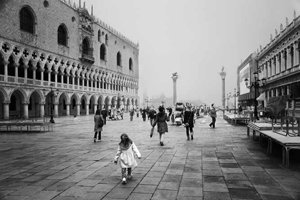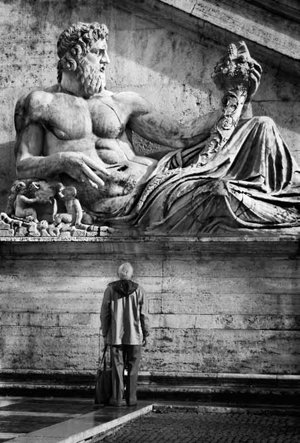articles/Projects/simplicity-genius-page2
The Genius of Simplicity - part 2 of 1 2
Published

Experiencing the contrast between something into which a great effort has been placed to 'remove the superfluous' and present something which achieves its goal in the simplest fashion, and something else which is rough, unpolished and intentionally complex was an eye opener for me. I have always been an advocate of simplicity, but this just put everything into perspective. It made me realise just to what extent the approach we take affects the results we produce and the repercussions it has on the consumers of our creations.
His approach strongly applies also to the visual arts, and particularly photography. The distinguishing fact of photography compared to other visual arts is that the medium, in this case the camera, is undiscriminating in what it captures.
It will not distinguish between strong and weak compositional elements. With most other artistic media, the artist has full control from the onset as to what to include in to the artwork - it is a bottom up approach - start with nothing and build from there. Photography is the exact opposite. Photographers start with everything - their entire surroundings - and have to eliminate from there. This obviously requires a particular skill, not to mention the fact that the photograph is usually seen, composed and captured within a very short period of time.
While this might appear as being a problem, or at least a nuisance, I realised that as photographers we might even be at a slight advantage over artists using other media. Most people who create things, be it consumer products or art, admittedly go through a specific cyclic process of creation whereby something is first built from the ground up and then revisited multiple times to remove the superfluous and simplify until the final product has reached the required simplicity. Photography allows us to very quickly reach (depending on the type of photography being undertaken) a good point within the final stage. Our surroundings immediately offer us the maximum complexity, and as such we do not need to do anything to build that. The first stage is all around us, and as photographers all we need to do is simplify from that point onwards. Granted, this next stage is also the most difficult part, and of course, it is also the part which most tend to overlook or ignore.

Simplification begins in our mind, or maybe our subconscious
We all perceive our surroundings in different ways. Good photographers have a natural tendency to isolate the important from the irrelevant - to capture that part of reality which on its own consists of a lean slice of context; enough to be complete on its own but without any excess which would create superfluous distractions, diminishing the overall experience of the pure image in its most perfect form. Of course, all this talent would be useless without the necessary technical knowledge needed to translate vision to capture.
Technique is important but should never take precedence over the photographer's eye. Too much focus on technique tends to create cold, lifeless images - not to mention the fact that it makes the process of photographic capture cumbersome and long; often long enough to lose the all important 'decisive moment'. Technique should eventually become an instinctive part of photography - because way too often does technique tend to take over the creation of a photograph, when it should rather become a slave to creativity; a tool merely used to translate vision to capture.
I am a firm believer that the end justifies the means within the creative process. We have a myriad of tools at our disposal, starting with a variety of cameras and lenses, all the way to advanced post processing tools and printing material. All these form part of the creative process, and all are in their own way tools for simplification. Sometimes it is not possible to eliminate all the superfluous details within the camera.
We should never put limits on ourselves and on the lengths to go to in order to create the best possible result from our creative vision. After all, who created the rules saying 'we should not do this', or 'we should not remove that'? Such rules are not only artificial, but also limiting, and thus damaging to our creative potential. This damage commences very early in our lives, when as children we are riddled with rules such as 'colour within the lines'. Society has got a particular obsession with conformity - from birth we are constantly being forced into boxes, conforming to the standards of society. We are cut down to size to fit into a social standard, and what's left on the cutting floor is creativity and potential.
Picasso was a leading figure of 20th century art. Most of the modern art movements span off from his work. He had a strong belief that great artists need to get rid of the baggage accumulated through years of conformity and rediscover their childish freedom and na´vete. His exact words were, "Every child is an artist. The problem is how to remain an artist once we grow up." This journey of self discovery is one which every artist needs to go through. It is not only long but sometimes also painful. We need to open ourselves to our environment and surroundings in order to rediscover ourselves in depth.
This means shedding the defences built over the years and making ourselves vulnerable. It is a necessary step to connect our inner selves to the world, because only then can we completely experience our surroundings. By creating this connection between our inner self and the rest of the world, we can better understand and experience the beauty of it all, and translate that to what eventually will become our art.
Some artists tend to skip this important step, usually resulting in cold, mechanical and often complex work. Their work does not connect us to the emotional intensity which one should experience when in the presence of art, because most likely they fail to experience it themselves. We need to realise that in order to transfer the beauty and simplicity of anything, first and foremost we need to connect with it ourselves, experiencing the same emotions we are trying to convey. We cannot keep ourselves closed and protected, because those who live in glass houses might enjoy the view but will never smell the fresh air.
Please Note:
There is more than one page for this Article.
You are currently on page 2
1st Published
last update 21/07/2022 08:49:44
More Projects Articles
The Society of Photographers Convention and Trade Show at The Novotel London West, Hammersmith ...
You have 8 days until The Society of Photographers Convention Wednesday 14th January 2026




